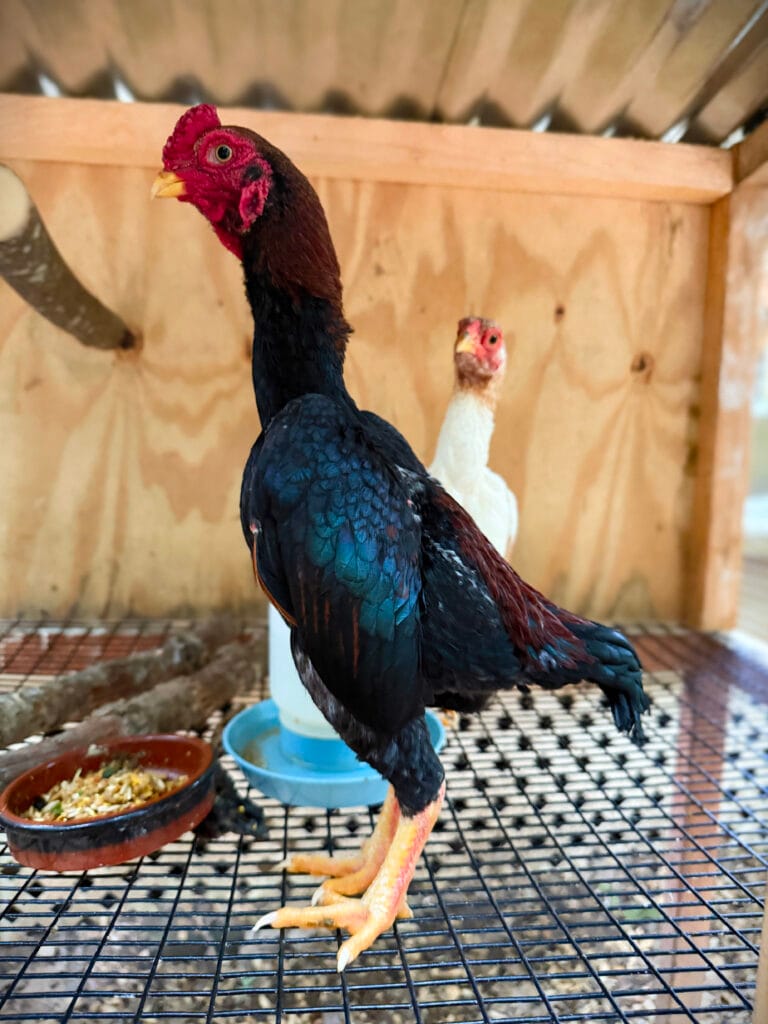
The Ko Shamo Chicken: A Fierce Beauty in a Compact Frame
The Ko Shamo chicken is a striking example of how selective breeding can produce a bird with impressive presence and personality despite its diminutive size. With its upright stance, muscular build, and assertive demeanor, the Ko Shamo is often described as a “warrior in miniature.” It’s a breed with deep historical roots, a strong cultural legacy, and a devoted following among poultry enthusiasts around the world.
Origins and History
The name Shamo is derived from the Japanese word for “Siam,” the historical name for Thailand, indicating the breed’s origin in Southeast Asia. The Ko Shamo, or “small Shamo,” is a bantam variety of the larger O-Shamo and Chu-Shamo game fowl. All Shamo types trace back to birds brought from Thailand to Japan as early as the 1600s, during the Edo period.
In Japan, breeders refined these birds for cockfighting—a practice with a long and controversial history—and for ornamental purposes. Over time, the Ko Shamo evolved into a distinct, purpose-bred bantam known not for its size, but for its warrior-like posture and spirited attitude.
Today, the Ko Shamo is prized in Japan and other parts of the world as a show bird, appreciated for its beauty, strength, and unique temperament.
Physical Characteristics
Despite being bantams, Ko Shamos exhibit many of the same characteristics as their full-sized counterparts. They are:
Size & Weight
- Males: 650–850 grams (1.4–1.9 lbs)
- Females: 500–650 grams (1.1–1.4 lbs)
Posture & Build
- Very upright, almost vertical stance
- Short, broad body
- Muscular thighs and thick legs
- Short tail held tight and low
- Short, firm wings carried close to the body
Head & Comb
- Broad skull with a strong, curved beak
- Triple or walnut comb
- Fierce, hawk-like eyes
- Short wattles and small earlobes
Feathers
- Very tight-feathered, almost hard to the touch
- Plumes accentuate the musculature and form of the bird
Their confident, proud bearing gives the Ko Shamo a much larger visual presence than its weight class would suggest.
Temperament
Ko Shamos are famously bold and alert. While males can be aggressive toward each other (a trait inherited from their game fowl ancestry), they are often surprisingly friendly toward humans and can become quite tame with regular handling.
Their intelligent and curious nature makes them entertaining to observe. They tend to carry themselves with dignity and aren’t particularly noisy, making them suitable for urban or backyard flocks—assuming proper management of any territorial males.
Breeding and Rearing
Ko Shamo hens are not prolific layers, but they do lay small, cream-colored eggs. They:
- Lay around 80–120 eggs per year
- Are broody and can be good mothers
Breeding Ko Shamos requires careful selection for form, stance, and character. Japanese breeders in particular have strict standards for show quality birds, including:
- Proper leg angle and stance
- Correct tail and wing carriage
- Tight feathering
- Masculine or feminine head expression
Because of their assertive nature, separation of males may be necessary, especially during the breeding season.
Housing and Care
Ko Shamos are hardy birds, well-suited to a range of climates. Key care considerations include:
- Space: While small, they are active and benefit from room to roam
- Perches and structures should account for their upright build
- Secure pens are needed to prevent escape and protect from predators
- Nutrition: High-protein diets help maintain muscle tone
Because of their tight feathering, Ko Shamos may need extra shelter in cold or wet weather, as they lack the insulating fluff of heavier breeds.
Ko Shamo in Shows and Exhibitions
Ko Shamos are highly regarded in poultry shows across Japan and Europe. In the United States, the American Bantam Association (ABA) recognizes the breed, and it appears in exhibitions under both “Ko Shamo” and the more general “Shamo bantam.”
Judging criteria typically emphasize:
- Correct stance and type
- Muscle definition
- Plumage tightness
- Facial expression and intensity
Their unique appearance makes them stand out in any lineup, and they’re favorites among dedicated breeders and rare poultry fanciers.
Cultural Significance
In Japan, Ko Shamos are not merely ornamental—they are seen as living embodiments of courage, honor, and refinement. The birds are often cared for with reverence, and even those not used for fighting or shows are appreciated as companion animals by enthusiasts.
Though cockfighting is now illegal in many regions, the Ko Shamo endures as a symbol of the tradition’s more aesthetic aspects—discipline, grooming, form, and character.
Conclusion
The Ko Shamo is a fascinating breed: small in stature but mighty in presence. Its blend of historical significance, striking appearance, and bold personality make it a standout choice for experienced poultry keepers and exhibition breeders alike.
Whether you’re captivated by its heritage, intrigued by its looks, or drawn to its character, the Ko Shamo offers a rewarding and unique poultry experience.


great article
Do you h as ve and hatching eggs for sale?
Can you ship internationally?